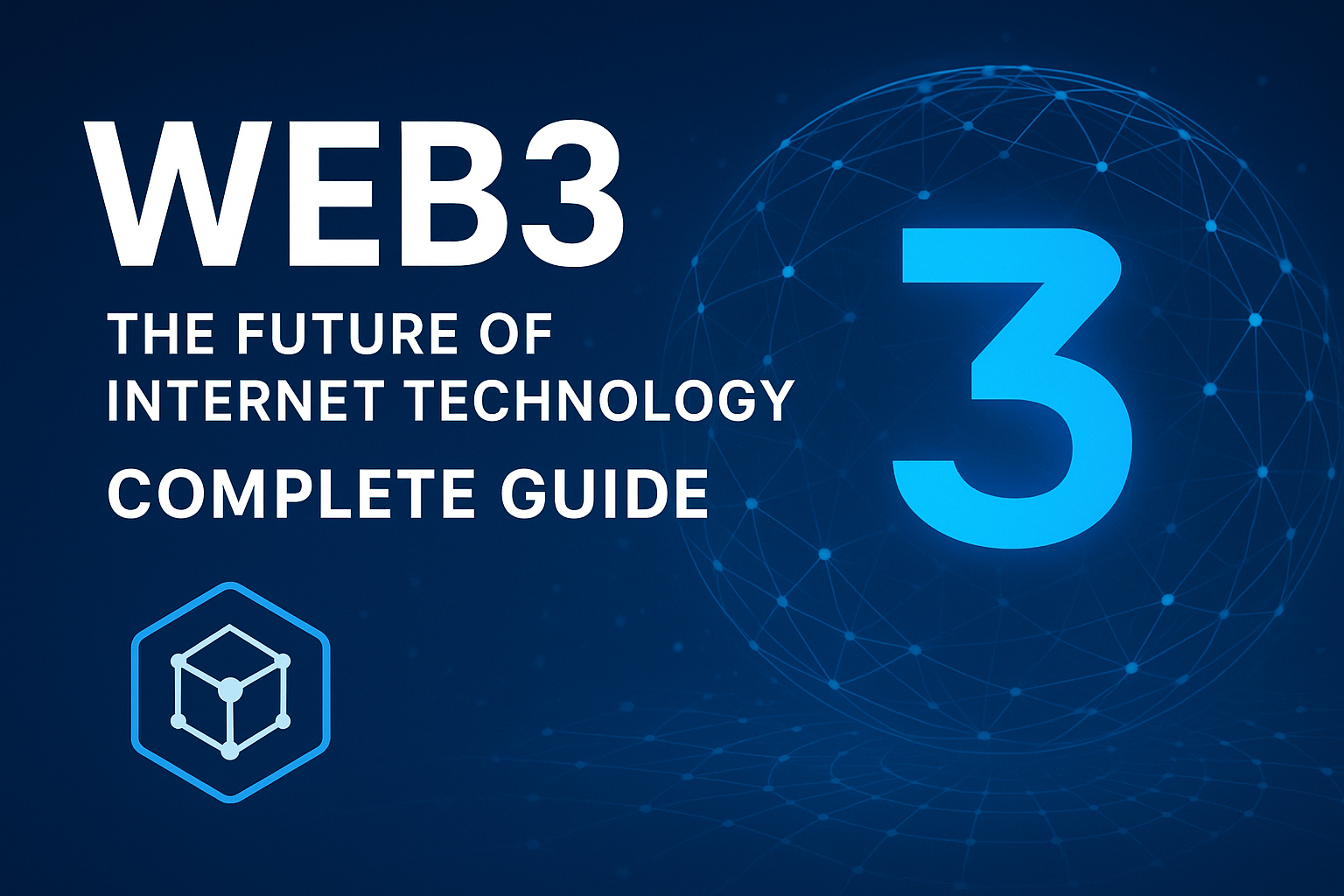What is Web3? Understanding the Next Generation Internet
Web3 represents the third generation of internet technology, fundamentally transforming how we interact, transact, and share data online. Unlike its predecessors, Web3 operates on decentralized networks powered by blockchain technology, smart contracts, and cryptocurrency systems (Ethereum.org).
This revolutionary approach eliminates traditional intermediaries, giving users unprecedented control over their digital assets and personal data.
The core principle of Web3 centers on decentralization, where no single entity controls the network. Instead, power distributes across millions of users worldwide, creating a more democratic and transparent internet ecosystem (Web3 Foundation).
Web1 vs Web2 vs Web3: The Evolution of Internet Technology
Here’s a quick comparison of how the internet has evolved (W3C History):
| Feature | Web1 (1990–2004) – Read-Only | Web2 (2004–Present) – Social Web | Web3 (Present–Future) – Ownership Web |
|---|---|---|---|
| Content | Static HTML pages | Dynamic, interactive platforms | Blockchain-verified ownership |
| Interaction | One-way (publishers → users) | Two-way (users create content) | Peer-to-peer via smart contracts |
| Examples | Yahoo, AOL, basic websites | Facebook, YouTube, Twitter | Ethereum, Uniswap, Decentraland |
| Control | Website owners | Big tech platforms (centralized) | Users & communities (decentralized) |
| Monetization | Banner ads, e-commerce | Targeted ads, SaaS, subscriptions | Tokens, NFTs, play-to-earn, DAOs |
| Limitations | Static, slow, limited UX | Privacy issues, data monopoly | Scalability, UX complexity, regulation |
Primary Uses and Applications of Web3
1. Decentralized Finance (DeFi)
DeFi apps remove banks and brokers, letting users transact directly.
- Examples: Uniswap, Aave, Compound
- Features:
- Peer-to-peer lending & borrowing
- Decentralized exchanges (DEXs)
- Yield farming & liquidity mining
- Smart contract–based insurance
2. Non-Fungible Tokens (NFTs)
NFTs provide unique digital ownership certificates.
- Examples: OpenSea, NBA Top Shot, Blur
- Use cases:
- Digital art & collectibles
- In-game assets & virtual real estate
- Music, films, and IP rights
- Digital identity & credentials
3. Decentralized Social Media
Web3 social networks shift power back to users.
- Examples: Lens Protocol, Farcaster, Mirror
- Features:
- Content monetization without platform cuts
- Censorship resistance
- User-controlled data & identity
- Token-based community governance
4. Gaming & the Metaverse
Web3 is reshaping the gaming industry.
- Examples: Axie Infinity, The Sandbox, Decentraland
- Features:
- Play-to-earn mechanics
- True ownership of in-game assets
- Interoperable virtual economies
- Community-owned platforms
Key Benefits of Web3 Technology
- Enhanced Privacy & Security – cryptographic security protects data.
- True Digital Ownership – verified by blockchain.
- Reduced Platform Risk – no single point of failure.
- Global Accessibility – 24/7, borderless digital economy.
- Transparent Transactions – all activity is verifiable.
Current Challenges and Limitations
Despite its promise, Web3 still faces significant hurdles:
- Scalability Issues – Ethereum processes ~15 TPS vs Visa’s 24,000+ (Ethereum scaling solutions).
- Complex User Experience – managing wallets & private keys is hard for non-tech users.
- Energy Consumption – though improving (e.g., Ethereum’s Proof-of-Stake cut energy use by 99.95% – Ethereum.org Energy).
- Regulatory Uncertainty – laws around crypto & tokens are still evolving (CoinDesk Regulation Updates).
- High Transaction Costs – network congestion drives up gas fees.
Criticisms & Skepticism
While Web3 is exciting, critics point out:
- Hype vs Reality – many projects are speculative with little utility.
- Rug Pulls & Scams – lack of oversight makes users vulnerable (Chainalysis Crypto Crime Report).
- Centralization of Infrastructure – many “Web3” apps still rely on AWS, Google Cloud, or centralized exchanges.
- Volatility – cryptocurrencies powering Web3 remain unstable.
The Future of Web3
The space is rapidly improving with:
- Layer-2 scaling solutions like Arbitrum, Optimism, zkSync reducing fees.
- User-friendly wallets & onboarding tools for mainstream adoption.
- Cross-chain interoperability enabling seamless experiences (Polkadot, Cosmos).
- Corporate adoption – from Meta’s metaverse push to Nike and Starbucks experimenting with NFTs.
Conclusion
Web3 represents a major shift in how the internet works—moving from centralized control to decentralized ownership and governance. While challenges like scalability, regulation, and adoption remain, the potential for greater privacy, transparency, and user empowerment is enormous. As the technology matures, Web3 could redefine how we connect, transact, and create value in the digital world.
For more content visit Deadloq . Thank You!!

[…] For beginners who want to understand blockchain basics, you can also check out our What is Web3? Beginner’s Guide . […]